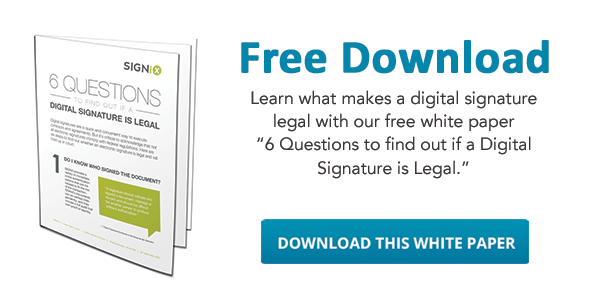The amount of paper used today is staggering. A typical document is copied 19 times, a typical office worker uses 10,000 sheets of paper each year, and a typical office discards 350 pounds of paper per employee each year, according to Ecopreneurist.com. Seven out of ten consumers receive paper bank statements. If every household stopped receiving paper bills and statements, 687,000 tons of paper would be saved every year—enough to circle the earth 239 times. The National Archives and Records Administration estimates that a cubic foot of records costs $23.24, virtually all of which is the rental cost of the office space.
In this age of Internet and mobile transactions, it’s hard to imagine some industries such as banks operating without paper. Whether a customer completes a paper application at a bank branch or prints the application off a bank’s website, most employees and customers still assume all transactions end with a stack of paperwork and a “wet” signature on the bottom line. There is technology that can reduce everyday paper use, while reducing costs.
For utility companies, hospitals & banks there is a heavy price tag to this paper addiction. A typical statement has an all-in cost of approximately $1.20, according to industry estimates, and multiplying that by millions of customers adds up very quickly. Industry experts state that the banking industry alone spends $70 billion to $80 billion per year on printing and mailing statements. This number does not include other paper correspondence, or any other costs associated with paper.
These are astounding numbers. But getting consumers to turn off the paper is not an easy task. Most consumers, even green-leaning ones, need an incentive beyond the environmental benefits to make the switch to digital. The solution is to create an enterprise-wide digital environment that is superior to a paper-based environment—one that customers want to join because it makes their lives easier. In an era of heightened environmental awareness, green initiatives resonate strongly with the public and can strengthen a businesses brand. There’s growing evidence that such green efforts boost the bottom line and can help companies outperform their competitors.
Digital signatures can help your company go paperless. To learn more about digital signature technology and what makes a digital signature legal, download our free white paper.
%20formatted-1.png?width=582&height=170&name=SIGNiX%20Logo%20Main%20(white)%20formatted-1.png)


